Suddenly, Last Summer: The 2021 Classic Movie Book Challenge
As a wise man once said, “Better late than really, really late.” Or words to that effect.
For seven consecutive years, beginning in 2013, I was a participant in the Summer Classic Movie Book Challenge, the brainchild of Raquel Stecher over at Out of the Past. To join the event, you read six classic movie-related books between June and September, and then write about them; it’s been a great way to finally read some of the many classic film books that I’m (apparently) addicted to buying, and is something I’ve looked forward to every year.
And then came 2020.
Even though I started working from home in March 2020 due to the COVID-19 pandemic, never went back to working in the office (I retired in June of this year), and was in my house most of that time, I was only able to finish one single book last summer. I don’t know what it was – perhaps it was that I often seemed to be working around-the clock, or maybe I was stymied by the surreality of the pandemic experience – whatever it was, it just couldn’t do it.
But I wasn’t letting that happen this year – so here I am, with my write-up for the six classic movie books I read this summer, and the one I read in 2020 for good measure! As always, it’s been an great experience, informative and interesting, sometimes a bit frustrating, and always loads of fun. So here you are – my 2021 entries for the Summer Classic Movie Book Challenge! (And I apologize in advance for the length of this post!)
My Life and the Final Days of Hollywood (2018) by Claude Jarman, Jr.
This personally autographed book was gifted to me by AnnMarie Gatti, owner of the Classic Movie Hub website. Before I received it, I knew Jarman had played the little boy in the 1946 feature The Yearling, and I’d even caught a glimpse of him at a TCM Film Fest a few years back. But that was it. So I was interested to delve not this book and see what this actor’s life was all about. And I wasn’t disappointed.
The book was an easy read that started with Jarman’s childhood in Nashville and quickly jumped into an extensive discussion of his experience as Jody in The Yearling, beginning with his discovery in his hometown by the film’s director, Clarence Brown. He was literally first noticed in his fifth grade school classroom; Brown and his assistant conducted a tour throughout the South in search of a young blond boy to star in the film, and after traveling to Hollywood for a screen test, Jarman was given the part. One of the women who read with him for his screen test was Jacqueline White, who you might remember from her roles in The Narrow Margin and Crossfire. White was slated to play the role of Jarman’s mother in the film, but she was later replaced by Jane Wyman. Jarman had nothing but good things to say about Wyman and the actor who played his father, Gregory Peck.
Back in Hollywood after his location shooting in Florida, Jarman attended classes in the MGM schoolhouse, where his classmates included Elizabeth Taylor (the “unofficial queen of the class”), Jane Powell (“cute, bubbly and down-to-earth), and Dean Stockwell (“a bit distant and withdrawn from the rest of us.”). He also rubbed shoulders with other young MGM contract players, Margaret O’Brien, Roddy McDowall, and Anne Francis. And when he won an Oscar for Most Outstanding Child Actor of 1946, the award was presented to him by “the biggest child star of all time,” Shirley Temple – “It was a thrilling moment,” Jarman wrote.
The remainder of the book covered Jarman’s experiences in such pictures as The Sun Comes Up (1949), a Lassie movie that was Jeanette MacDonald’s last film (and where Jarman got bit in the face by the famed pup); Roughshod (1949), with Gloria Grahame and Myrna Dell; Intruder in the Dust (1949), an anti-lynching film starring Juano Hernandez and helmed by The Yearling director Clarence Brown; and Rio Grande (1950), where he played the son of John Wayne and Maureen O’Hara. Jarman also talked about a car accident that happened when he was 16 years old; while driving in Nashville during a rainstorm, he struck and killed a 57-year-old schoolteacher. After an inquiry, it was judged that Jarman was not at fault, but the actor admitted that his grief surrounding the incident remained with him ever since.
By the early 1960s, Jarman’s film career was all but over, but he spent 15 years, from 1965 to 1980, as executive director and co-programmer San Francisco International Film Festival, growing it from a small event to the one of the world’s most prestigious cinema fests. If you’re a fan of Jarman, The Yearling, the San Francisco festival, or just enjoy behind-the-scenes tales of old Hollywood, you’ll enjoy this memoir.
The Essentials Vol 2: 52 More Must-See Movies and Why They Matter (2020) by Jeremy Arnold
In the 2017 Classic Film Book Challenge, one of the six books I read was Jeremy Arnold’s 52 Must-See Movies and Why They Matter, which covered such gems (and personal favorites) as Grand Hotel, Out of the Past, and All About Eve. Well, Arnold is back at it again, with 52 more films that you simply must see, and I am here for all of them. Like his first book, this tome includes a brief overview of each movie, behind-the-scenes information, and a “What to Look For” section, as well as a quote from one of TCM’s hosts for the “The Essentials” segment, usually the beloved Robert Osborne, but also Alec Baldwin, Rose McGowan, Drew Barrymore, and Ava DuVernay.
This volume included many of the films that I love to watch again and again, such as Twentieth Century (1934), The Awful Truth (1937), The Women (1939), and Pillow Talk (1959), as well as a selection of some of my favorite noirs, including Mildred Pierce (1945) and Sweet Smell of Success (1957). My favorite part of the book was learning new information about the movies; here are just a few of the new-to-me tidbits of knowledge:
Maria Ouspenskaya earned an Oscar nomination for Best Supporting Actress for her performance in Dodsworth. She was on screen for less than five-and-a-half minutes.
At the end of The Quiet Man, Maureen O’Hara whispers something in John Wayne’s ear and the actor reacts with a kind of pleased amazement. The film’s director, John Ford, instructed O’Hara what to say – both O’Hara and Wayne vowed to never reveal what she’d said, and they never did.
In The Maltese Falcon, there’s a scene where Humphrey Bogart’s character, Sam Spade, is at the scene of his partner’s murder, talking to a cop played by Ward Bond. In the background, a poster for Bogart’s 1938 musical comedy film Swing Your Lady can be seen peeling off a wall. This is an inside joke, as Bogart considered this film to be one of his worst.
The Treasure of the Sierra Madre was a family affair for more than the father-son combo of director John Huston and star Walter. Tim Holt’s father, Jack Holt, was a star from the era of silent westerns; he can be seen briefly as a bum talking to Walter Huston.
This book makes an enjoyable companion to Arnold’s previous book – I hope he comes out with another 52 must-sees!
The Million Dollar Mermaid: An Autobiography (1999) by Esther Williams with Digby Diehl
The first chapter of Esther Williams’s autobiography doesn’t start with her birth, or even her parents’ beginnings. It opens with her detailed description of taking LSD at the suggestion of Cary Grant.
If this doesn’t give you a clue of what kind of wild ride this book would be, I don’t know what will.
A champion swimmer, Williams became a movie star through more than two decades of MGM pictures that spotlighted her talents in the water. Once you get past the LSD info, Williams’s autobiography takes us back to her early days, when one of her earliest recollections was the death of her older brother, Stanton, who was a child actor with a promising future.
Williams takes the reader through her successes as a competitive swimmer, her entry into professional swimming with the Billy Rose’s Aquacade at the San Francisco World’s Fair, joining the MGM family as the studio’s answer to 20th Century-Fox skater Sonja Henie; and her four marriages and three children. Throughout the 404-page book, she shares a series of personal, often shocking, recollections – sometimes about herself, sometimes about others. Here are just a handful:
For two years, beginning when she was just 13, Williams was sexually assaulted by a neighborhood boy that her parents took in after their son’s death.
She lost her first baby while her then-husband, singer Ben Gage, spent the day playing golf. Incidentally, her husband dubbed the singing voices of Dana Andrews in State Fair and Victor Mature in My Gal Sal.
Speaking of Victor Mature, Williams had an affair with him during the filming of Million Dollar Mermaid (1952). She describes their first encounter like this: “One night, after doing a steamy love scene that was more than adequate foreplay, we went to my dressing room, locked the door, and unleashed our hunger, our passion for each other. Vic was a strong and fulfilling lover. Even better than I had fantasized.” (Okay, then.)
Her third husband, Fernando Lamas, proposed that they get married on New Year’s Eve 1969 by saying: “I’ve had a very good year and I need the write-off.”
Williams also shared that Lamas loved to go without underwear “to make sure people looked at his crotch.”
Williams also made some rather catty comments about several actresses, including Lana Turner, Joan Crawford, and Lucille Ball. (I couldn’t help but find it interesting that all three actresses were dead by the time Williams’s book came out.)
In perhaps the most scandalous and controversial revelation in her book, Williams says that actor Jeff Chandler, with whom she had an affair, was a “cross dresser.” She states that before she ended her relationship with the actor, she told him that she found his “aberration [to be] very, very sad.”
Overall, I found Williams’s book to make for very interesting reading. It was well-written, never boring, and led me to want to see her movies (before reading her book, I’d only seen one – Million Dollar Mermaid). However, I was really turned off by some of the things she said about people who are no longer around, especially Jeff Chandler. Even if it was true, I don’t think it was Williams’s place to share that information.
Jennie Gerhardt (1911) by Theodore Dreiser
After I read Theodore Dreiser’s Sister Carrie (1900) for the 2019 classic movie book challenge, I expressed my interest in reading the author’s other books that had been made into movies: An American Tragedy (1925) and Jennie Gerhardt. I read An American Tragedy in 2019 (too long ago for me to review here), and Jennie Gerhardt this summer. Of the three, Jennie Gerhardt is my favorite.
The book tells the story of the title character, who is one of six children from a poverty-stricken German family in Columbus, Ohio. When we meet Jennie in fall 1880, her father, a glass-blower by trade, is ill and unemployed, and Jennie and her mother are visiting local hotels to seek work. Jennie’s beauty works on their behalf and the two are given work cleaning in the hotel. This leads to Jennie’s fortuitous encounter with a senator who winds up falling for Jennie and wants to marry her. Unfortunately, before this can happen, the senator is stricken with typhoid and dies – and Jennie is pregnant. The book goes on to span a period of several decades, with Jennie’s soap opera-esque life seeing her involved with Lester Kane, the younger son of the wealthy family where she works as a maid, giving up Lester years later when he is disowned for his illicit relationship with her, Lester’s marriage to a wealthy widow, the death of her beloved daughter, and being called to Lester’s bedside when he dies.
I found Jennie Gerhardt much easier to read than the two previous Dreiser novels I read – there was less flowery language and fewer unnecessary ruminations. I must admit, though, that there were a few phrases that had me heading for Google. In one scene, for instance, Lester tells his wife, “You’re a seraphic suggestion of attenuated thought.” And in another section of the book, Dreiser refers to “the one divine, far-off event of the poet.” I was able to determine that the poet he referenced was Alfred Lord Tennyson, but I really wasn’t able to grasp a clear understanding of the far-off event (the second coming of Christ?) and how it related to the Lester’s musings. On the other hand, one of the best things I learned was the origin of the word “antimacassar.” Macassar was a heavy oil that men used as a hair tonic in the 19th century. Because the oil had a tendency to rub off on collars and chairs, the “antimacassar” was created – a lacy cloth spread over the top of the chair!
Dreiser’s novel was made into a 1933 Paramount film of the same name, starring Sylvia Sidney in the title role, Donald Cook as Lester, and Edward Arnold as the senator (Sidney was excellent, but it would’ve been nice if a more charismatic actor had played Lester). The film devoted less time to Jennie’s siblings and father and, interestingly, it portrayed Lester as a kind of business savant when, in the book, it was actually his older brother who had all the talent. Also, in the book, when Jennie’s daughter Vesta died, Jennie later adopted two children. This wasn’t portrayed in the film. These were minor deviations, though; all things considered, the film provided a faithful adaptation of the book, which I highly recommend. (You might want to get some tissues handy near the end, though.)
Ernest Borgnine: My Autobiography (2009) by Ernest Borgnine
I bought this book several years ago after seeing its subtitle: “I Don’t Want to Set the World on Fire, I Just Want To Keep My Nuts Warm.” How can you pass that up? I toyed with the idea of reading it for one of the previous year’s movie book challenges, but for some reason, the book just didn’t grab me. I decided to give it another try this year, and boy, am I glad I did. This was a good one.
First of all, it was easy to read – which, as you may have guessed, is a big selling point for me. (I can’t tell you how many movie star biographies I’ve abandoned because they were just too much work to slog through.) Reading Borgnine’s book was kind of like listening to a friend tell you a series of stories – sometimes folksy, occasionally profane, often juicy, and always interesting.
Borgnine – whose parents were both born in Italy (his father’s name was Borgnino) – was frank from the start; he talked about the suicide of an aunt, the drowning death of twin cousins, and his mother’s early onset dementia. He was bitten by the performing bug when he was a Boy Scout and slayed the audience at an event where he wore his father’s long johns and a bib around his neck. Although his mother wanted him to be a barber, Borgnine joined the Navy and served during World War II. When the war ended, Borgnine was 28 years old and to his surprise, it was his mother who suggested that he become an actor: “You always like to make a damn fool of yourself, making people laugh,” his mother said. “Why don’t you give it a try?” And the rest is history.
The budding actor honed his craft in the Randall School in Hartford, Connecticut, and a repertory company, The Barter Theatre of Virginia. Between auditions, he made ends meet with a variety of odd jobs, including washing dishes, unloading trucks, and working in baggage rooms at train terminals. After several years, in 1949, he landed a role in his Broadway debut, playing a mental patient in the play Harvey (he replaced Jesse White, best known for his commercials as the Maytag repairman). He also appeared on Broadway in Mrs. McThing, which starred Helen Hayes (who became his first child’s godmother), and he made his big screen debut in the 1951 drama The Whistle at Eaton Falls, starring Lloyd Bridges and Dorothy Gish.
Over the years, Borgnine distinguished himself in classics that included From Here to Eternity (1953), Bad Day at Black Rock (1955), The Dirty Dozen (1967), Ice Station Zebra (1968), and The Wild Bunch (1969). He also gained popularity on the small screen, starring in the title role on TV’s McHale’s Navy. Borgnine had fond memories of working with many stars, including Susan Hayward, Spencer Tracy, and Gary Cooper, but Jim Brown wasn’t a favorite. (He said he agreed with the director of The Split [1968] when he told Brown that he wouldn’t work with him again if he were the last actor on Earth.) And, notably, Borgnine won an Academy Award for Best Actor for his performance in the title role of Marty (1955). His touching acceptance of the award can be seen below; watch when he first goes on stage and hands something to Jerry Lewis. Lewis had been so certain of the outcome that that he bet Borgnine $1.98 that he would win. Borgnine put 198 pennies in a sock before the ceremony – that’s what you see him giving to Lewis!
One of my favorite things about the book is that Borgnine devotes roughly half of the book to covering many of his films – from the popular to the obscure – sharing his recollections from each. It made for fascinating reading. He also devoted a chapter to some of his special friends, including John Wayne, Robert Mitchum, George Lindsey (best known for playing Goober on the Andy Griffith Show). He was also good friends with Lee Marvin. Interestingly, he devoted very little space to his first four marriages – instead, he focused primarily on his fifth wife, Tova, to whom he was married from 1973 until his death in 2012.
There is just so much to love about this book – I haven’t even scratched the surface of the interesting stories that Borgnine had to tell. I’ve long been a fan of this actor, and I appreciated him even more after, years ago, he responded to my request for an autographed photo by writing me a lovely letter. But by the time I was finished with his book, I was simply in love. He came across as genuine and down-to-earth – the kind of guy you’d love to share a beer with. And if I can just add one more tidbit that illustrates Borgnine’s character – at the end of the book, he tells us that he used to be a heavy smoker (five packs a day!), but he kicked the habit after having a benign nodule removed from his throat. Following this story, he encouraged his readers to stop smoking: “It’s a drug, it’s a nasty habit, and in the end it’s going to kill you . . . there are better ways to relax than by lighting a cigarette or getting drunk or doing drugs or any of the things we do to ourselves because of stress or social demands. And, you know, the time you sit there is not only relaxing, it’s good for reflection. In our increasingly fast-paced world, I can’t recommend that enough.” What a guy.
The Complete Idiot’s Guide to Classic Movies (2009) by Lee Pfiffer
I’ve had this book in my collection for longer than any of the others I read this summer. Divided into 16 chapters according to type – from silent films to epics – the book presents films in each category that are judged to be “classics” by the author; his criteria include movies with an enduring legacy that has extended beyond its initial release, movies that audiences want to experience repeatedly over many years, and movies that resonate with their intended audience. In addition to a brief description of each movie’s plot, the author includes information related to behind-the-scenes trivia, remakes and sequels, production errors, and deleted scenes.
In reading the book, I not only gained a lot of new information, but I also compiled a lengthy list of films that I now want to see. The list can be seen here; below are some of the many trivial tidbits that I picked up:
John Ford was the original director for Mister Roberts (1955), but he disagreed with star Henry Fonda over his interpretation of the title role and left the production halfway through filming. He was replaced by Mervyn LeRoy.
James Cagney and David Niven can be seen as extras in the 1935 version of Mutiny on the Bounty. Cagney, who had been a star for several years, just thought it would be fun to be part of the movie!
Sergio Leone, director of popular spaghetti westerns such as Fistful of Dollars and The Good, The Bad and The Ugly, wanted to cast the stars of the latter film – Clint Eastwood, Lee Van Cleef, and Eli Wallach – in the roles of the three luckless gunslingers in the opening sequence, but Eastwood wouldn’t agree. The parts were ultimately played by Woody Strode, Jack Elam, and Al Mulock.
The screenplay for the fifth Sean Connery James Bond film, You Only Live Twice, was written by Roald Dahl, best known for authoring Charlie and the Chocolate Factory.
As appreciative as I am for the new films on my must-see movie list, and as enjoyable as it was to take in all this new information, I have to say that the experience reading this book wasn’t all sunshine and rainbows. I was able to put aside the author’s all-too frequent use of superlatives to describe films or performances, and I could ignore his inexplicable disrespect for Mark Wahlberg (he never missed an opportunity to toss some shade the actor’s way), but I was unable to overlook the errors that were scattered throughout the book. These ranged from misspelled names, like “Joel McCrae” and “Joseph Cotton” to mis-identifications – referring to “Ingmar” Bergman as “Ingrid” – to completely incorrect plot descriptions. In sharing the plot of Now, Voyager (1942), for instance, he states that Bette Davis’s character falls in love with her “married, dashing shrink.” False. (Davis falls in love with Paul Henreid, who is NOT her doctor.) For D.O.A. (1950), he tells us that Edmond O’Brien is a “groom-to-be who decides to unwind from pre-wedding jitters with a stay in San Francisco. Nope. (O’Brien’s character has a girlfriend, but there’s never any mention of them getting married.) And we’re informed that Ray Milland, in Dial M for Murder (1954) learns that his wife, Grace Kelly, “once had an affair with a friend of his . . . [and] hires an assassin to murder her.” Actually, Kelly has an affair with a writer who Milland did not know, and Milland engages an old schoolmate (who’s certainly no assassin) to kill her. These errors were just sloppy – a good proofreader with a knowledge of popular movies could have caught every one of them.
On the positive side, the author provided a comprehensive look at a wide variety of classic films – from the well-known to the obscure – and was presented in a reader-friendly format and a conversational manner. It was worth the purchase.
Hollywood’s Hard-Luck Ladies: 23 Actresses Who Suffered Early Deaths, Accidents, Missteps, Illnesses and Tragedies (2020) by Laura Wagner
This was the one book that I was able to read in the summer of 2020, but I enjoyed it so much that I felt compelled to include it in this year’s write-up. As the title indicates, the author writes about 23 actresses – some well-known to film fans, such as Mae Clarke and Helen Walker, but many others who were far more obscure, such as Charlotte Henry, Marjie Millar, Rosa Stradner, and Constance Worth. For each actress, the author provided biographical information, career details, and specifics about their respective downfalls.
Although the book was absorbing, some of the stories were especially hard to read – Susan Cabot, who I remembered from her role in the 1954 Audie Murphy western Ride Clear of Diablo, was beaten to death by her son. Judy Tyler, seemingly on the verge of stardom after her co-starring role opposite Elvis Presley in Jailhouse Rock (1957), was killed in a car accident before the film’s release. And Lyda Roberti, who was hilarious in the 1933 pre-Code Three-Cornered Moon, died of a heart attack at the age of 31.
A couple of bright spots in the midst of the gloom – I discovered two new-to-me movies by reading the book: Peggy Shannon’s Deluge (1933) and Sidney Fox’s Bad Sister (1931). Both are available on YouTube, and both are well worth your time. As is this well-written, well-researched book!
And that’s it! If you made it this far, I am shocked truly thank you. I’m very proud to have successfully completed this year’s challenge (it was no walk in the park!) – and grateful for it, as well, as it got me back into the habit of reading, which the pandemic seemed to have quashed. I’m already looking forward to next summer’s event!








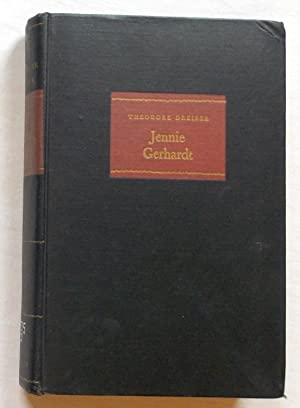







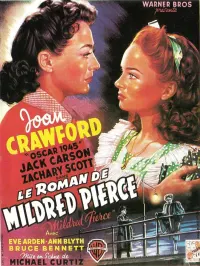




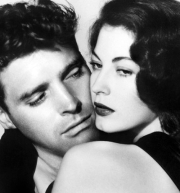













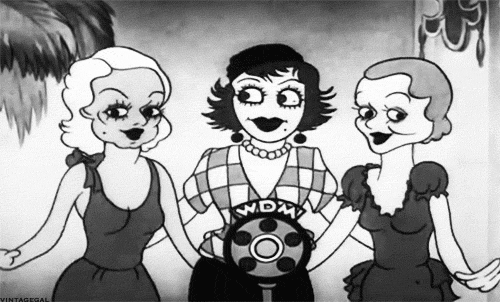


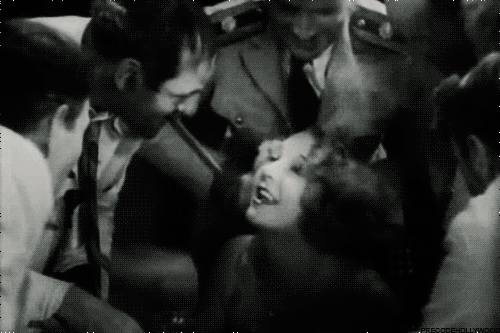


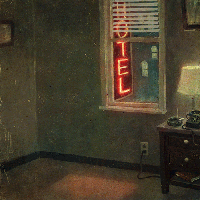
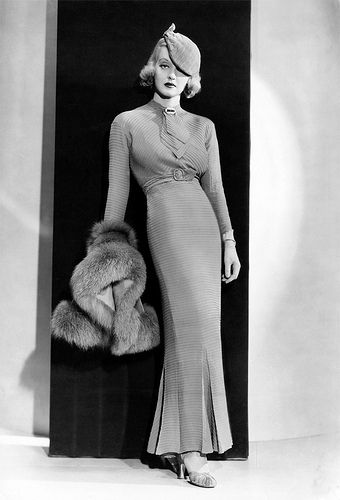



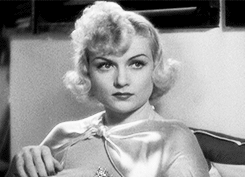
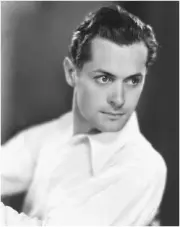
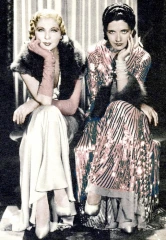

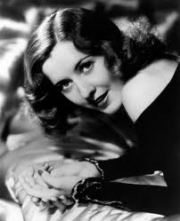



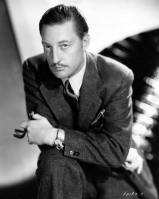




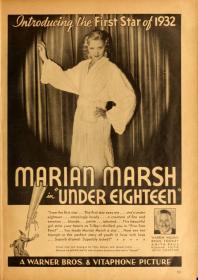
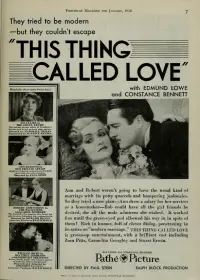

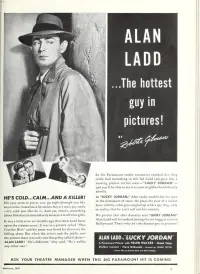
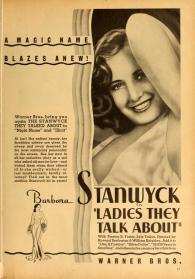

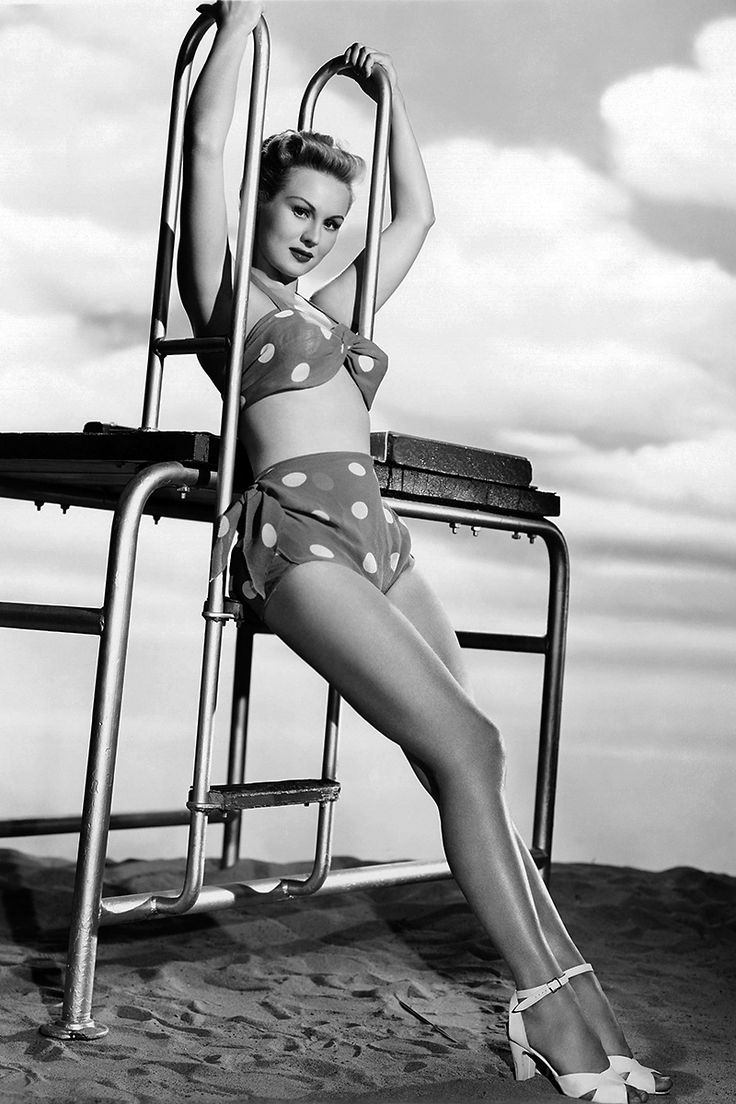







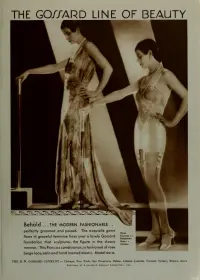

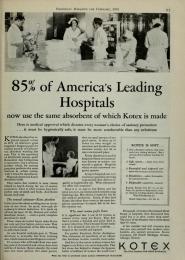

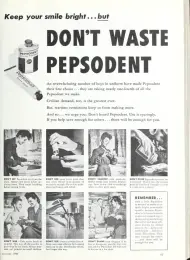


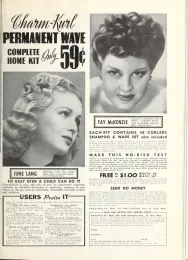


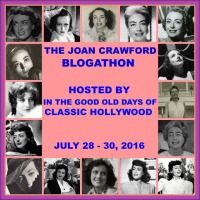


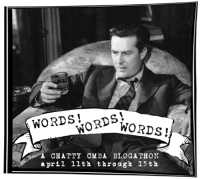

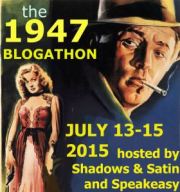
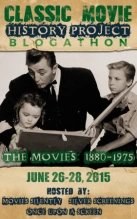
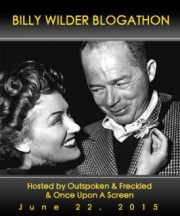


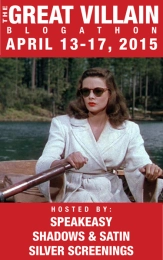


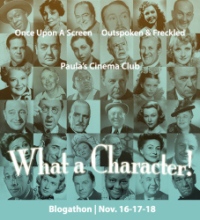
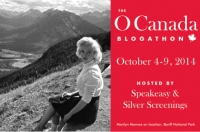


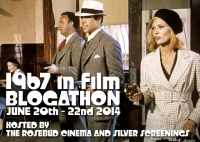


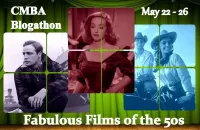
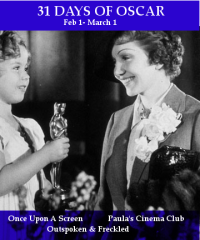
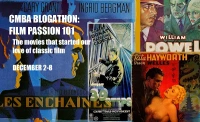







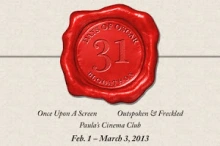

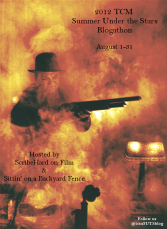


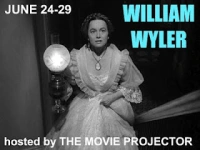





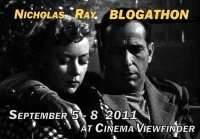

I’m so glad that you came back! 2020 was such a difficult year so I totally understand. I was so excited to see that you blessed this challenge with another of your always epic 6 book review!
Thank you, Raquel — it was great fun!